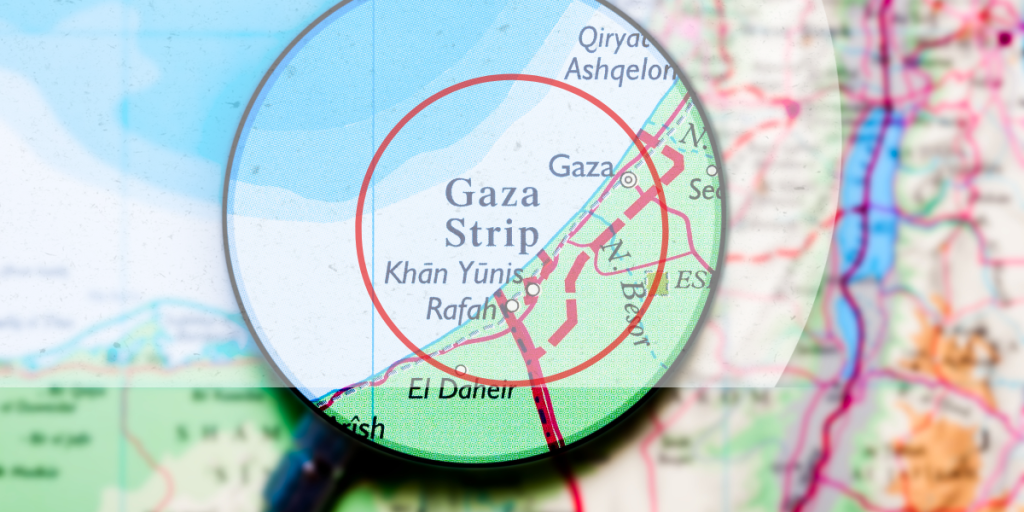The obvious solution for the government is quite simple – make a decision that brings the number of Palestinian workers in Israel to such that features no volatility: zero.
Since the Six-Day War and up until October 7, Palestinian workers from Judea and Samaria were permitted to work in Israel, primarily in the construction industry. Their number often changed, usually rising when the security situation stabilized, and falling (sometimes extremely sharply) in times of hostilities or security-related tensions due to terrorism concerns. In the third quarter of 2023 (right before the war), the number of Palestinian workers holding a work permit reached a peak of 127,000. Similarly, in the third quarter of 2000 (right before the Palestinian terror wave beginning on September 30, 2000) the number of workers permitted to work in Israel hit new peaks. In addition to the workers holding permits, many Palestinians with no such permit (known as shabakhim – illegal residents) also worked on Israeli construction sites, often staying overnight in Israel, and working elsewhere as well. In the past decade, the percentage of workers without a permit out of all Palestinian workers from Judea and Samaria working in Israel was estimated to be between 22%-43%, and this percentage was extremely volatile as well.
The volatility in the number of Palestinian workers and the dependence of the construction industry’s regular operation on the arrival of such workers present an extremely harmful combination. Construction industry entrepreneurs and contractors got accustomed to getting cheap labor whenever the security situation was calm, a privilege practically nonexistent in other Israeli industries, and completely nonexistent in construction industries in many other developed countries. Whenever conditions change and security closures are implemented due to terror attacks or war, entrepreneurs and contractors demand government assistance, on the grounds that their industry has been critically hit, construction sites stand empty, and it is the government’s (i.e. the public’s) responsibility to find a solution. Even with government assistance, the timeframe for housing construction is lengthened and the supply of housing units can be diminished, driving up prices. Meanwhile, entrepreneurs and contractors avoid massive capital investments or the adoption of new technologies that facilitate less labor-intensive construction methods (as is the case in many developed countries). Even when virtually no Palestinian workers arrive (such as in the months of war following October 7), construction entrepreneurs and contractors continue to avoid doing so, since they estimate that the government will cave to their pressure within a short while, reverse their policy position and restore permission for the mass entry of Palestinian workers.
The construction industry has a few good alternatives to Palestinian labor, aside from capital investment and technological innovation. These include Israeli labor (mainly low-education young Arab adults, whose alternative is usually unemployment or joining criminal gangs); bringing in foreign construction companies to carry out major projects (so long as they do so by tender, meeting commonly accepted Israeli legal criteria, and commit to handling the import and employment of their workers and to ensuring their exit from the country at the end of the project as the condition for payment); and bringing in foreign workers under bilateral agreements with other states. The latter should entail taxes and substantial employment fees (much higher than they are today) to compensate the rest of the Israeli public for the economic-social-national harms created by bringing in foreign workers, as well as strict monitoring of which states bilateral agreements are signed with in order to minimize the risk of foreign workers settling in Israel.
From the entrepreneurs and contractors’ perspective, these alternatives are less attractive than the current situation; but to the economy at large, they would be a significant economic improvement, primarily because they prevent the damages inflicted by the unavoidable great volatility in the number of Palestinian workers. It should be noted that such damage usually occurs in tandem with a war or military conflict negatively affecting economic activity in Israel, thus potentially exacerbating a market slowdown or recession. In other words, not only is the damage significant, but its timing can be particularly bad too.
In addition, the sharp fall accompanying the volatility of Palestinian workers’ numbers in Israel can cause high unemployment in Judea and Samaria. Such unemployment can increase young men’s incentive to engage in terroristic activity at a higher rate than would be the case for those with lower but more stable incomes who had never entered Israel to work in the first place.
To prevent the harm of volatility and create the conditions and incentives that promote alternatives preferable for the Israeli economy and society, the obvious solution for the government is quite simple: make a decision that brings the number of Palestinian workers in Israel to such that features no volatility: zero.
First published in Israel HaYom (“Employing Palestinian workers hurts Israel’s economy” 17.3.2024)




